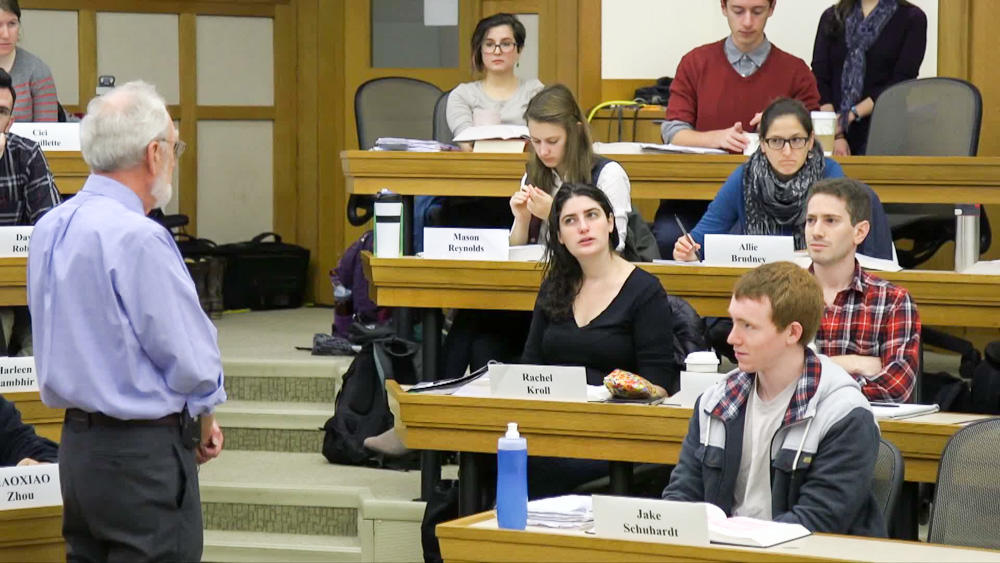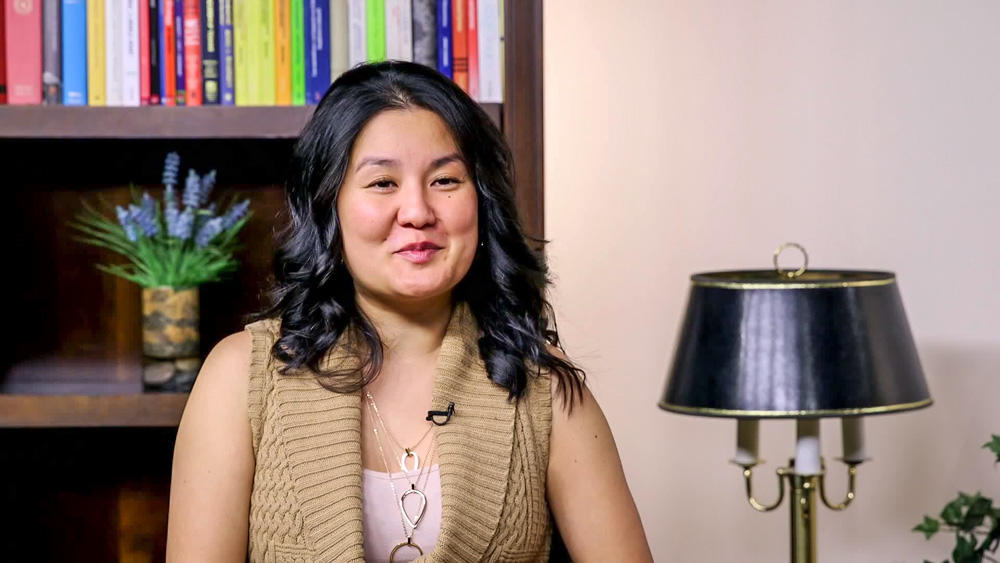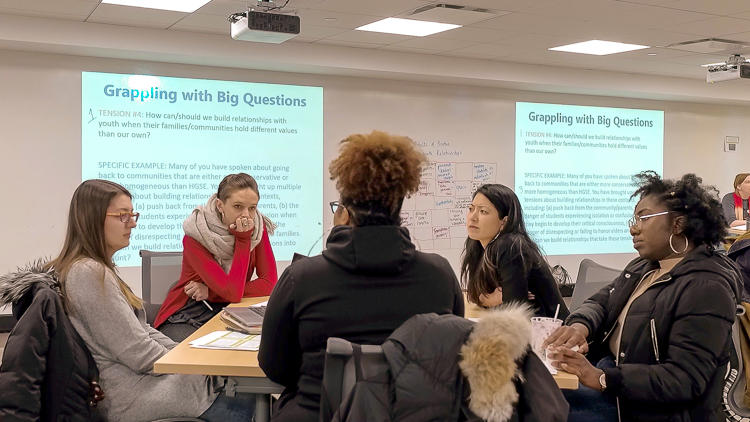Patterns of classroom participation can take shape very early in a semester and become further cemented with each class session. Students who do not perceive professors’ strategies of soliciting participation as fair or purposeful may be less apt to contribute. Establishing inclusive, equitable norms of participation the very first class sessions is essential. In this video, Tim McCarthy demonstrates that even in a seminar setting he calls on students to monitor equitable participation.
Calling on students in equitable ways
Instructor
Timothy Patrick McCarthy, Lecturer on History and Literature
Student Group
Undergraduate/Graduate
School
Harvard College
Course
Stories of Slavery & Freedom
Group Size
16 students
- Establish the norm (or some equivalent) that all students wishing to participate raise their hands for you to call on them
- Consider the broader implications of your discussion strategies through their resulting participation patterns among students and how those patterns correlate with the classroom’s demographic makeup
- Elevate historically marginalized voices
- One study demonstrates that providing opportunities for regular collaboration and interaction during class can help address performance gender gaps in the physics classroom while improving student understanding in general (Lorenzo, 2006)
- Billson posits that varied opportunities for discussion, formal and informal, encourages voluntary participation among students, takes into account students’ comfortability, and reduces participation anxiety (1986)
- Billson additionally suggests that allowing for interruption in discussion may only reinforce the dominance of extroverted students in class, while non-interruption, conversely, may afford greater inclusivity by carving out space for quieter students to become more involved and voice their thoughts (1986)
- The Center for Research on Learning and Teaching at University of Michigan offers tips for “Creating Inclusive College Classrooms”
- An article from Life Sciences Education outlines a wealth of practices that promote greater equity in classrooms




